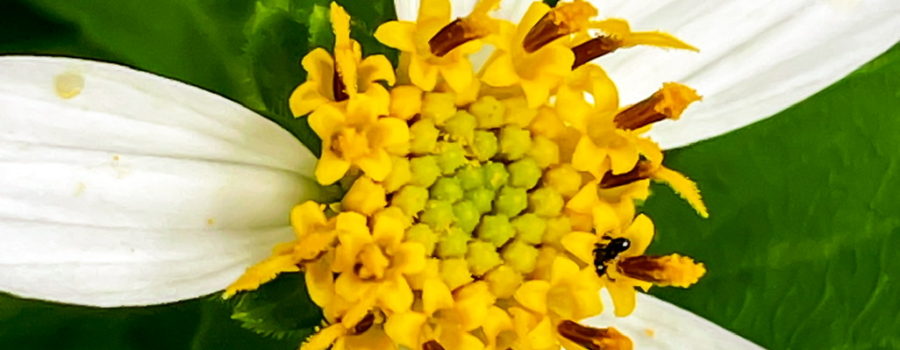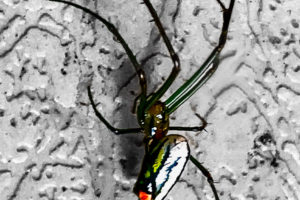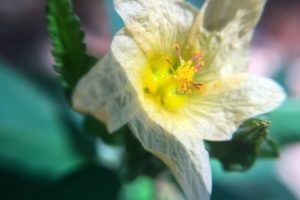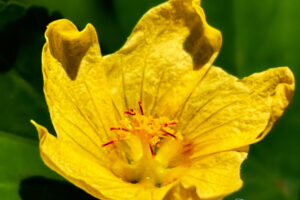Blackjack is a Pretty Cool Plant and Very Useful

One of the plants that I have growing in abundance on my property is blackjack or hairy beggarticks. Even though a lot of people call it an invasive weed (and it definitely can easily become invasive), I really love having it around because it attracts a lot of wild insect life. It is definitely is popular with the pollinators. Unless it’s raining, in the afternoon when I get home from work there are usually several kinds of butterflies fluttering around. Friday it was a zebra longwing and two types of swallowtail. I have also found gulf fritillaries and cloudless sulphurs regularly. But I also find much more than butterflies in the blackjack. A big patch of it isn’t far from my front porch where the organ pipe wasps and paper wasps have their nests, and they both love the blackjack. The ants also seem to enjoy the nectar that can be found in the central florets.

The blackjack plant is popular with a lot of other insects besides just the pollinators, too. It is one of the best places on my property for finding caterpillars. It’s probably second only to the passion fruit vines from last year. Right now pretty much every step I take in the blackjack scares out grasshoppers. There are several different types of several different sizes and colors. So far I have seen a bunch of red legged grasshoppers and several other types that I will be featuring in future posts. The blackjack also makes a wonderful host for some of my favorite spiders. I have found a few jumping spiders out there and a couple of green crab spiders as well, but blackjack isn’t the favored habitat for either of them. By far the most common spider in the blackjack is the most common spider I have around here, the Mabel orchard orb weaver. There are even the occasional spiny orb weavers, although I still haven’t found any males.

Blackjack or hairy beggarticks is native to both North and South America, but it has been colonized in much of the rest of the tropical and subtropical world. It is a generalist and will grow in sandy soil, loam, and even clay. It will grow in any pH and in full sun or partial shade. It reproduces mainly by seeds, but it’s seeds have a pretty interesting way of getting around. The seeds have a small barbed hair on either end and those barbs will attach to fur, feathers, or people’s clothing to be transported to other locations. This tendency to attach to things like a beggar is where the name hairy beggarticks comes from (hairy from the small hairs on the undersides of the leaves and on the stems).

Besides the fact that this plant is pretty to look at and great for some of my favorite types of wildlife, I also really like this plant because it has lots of uses for people, too. For many cultures it is a useful and frequently cultivated vegetable. The leaves can be eaten raw as a component of salads, or it can be cooked into stews and soups. Many cultures also dry the leaves for later. It has been used for ages in traditional Chinese medicine under the name xian fang cao. Fresh leaves and flowers can be placed on fresh wounds to help stop bleeding, and this plant has also been used to treat malaria. All in all, I’m very happy to have this “weed” growing on my property, and it is welcome to stay!

If you enjoy beautiful nature photography and artwork and enjoy engaging nature and pet related content, please subscribe to our blog. We promise we won’t spam you!





Recent Comments